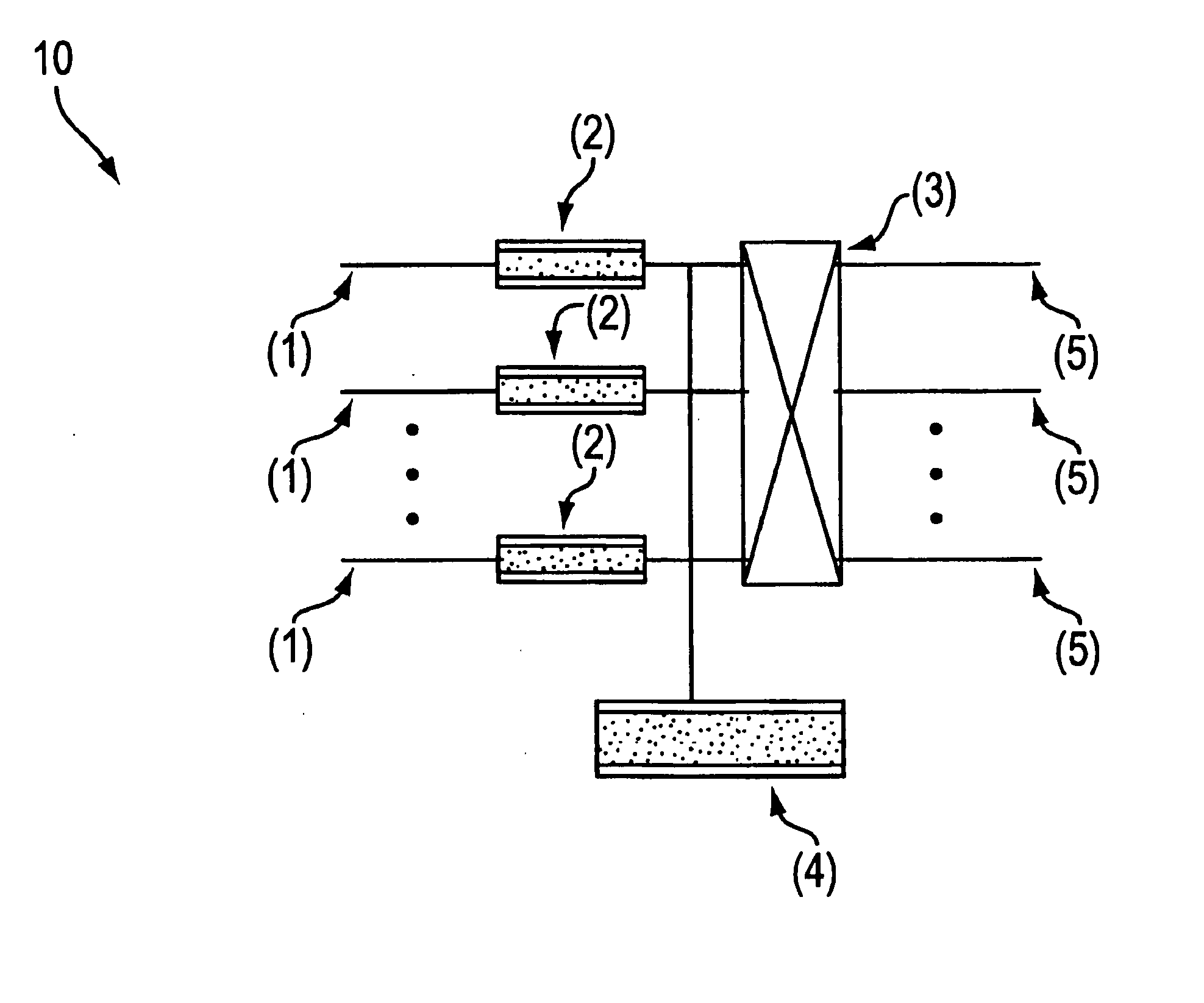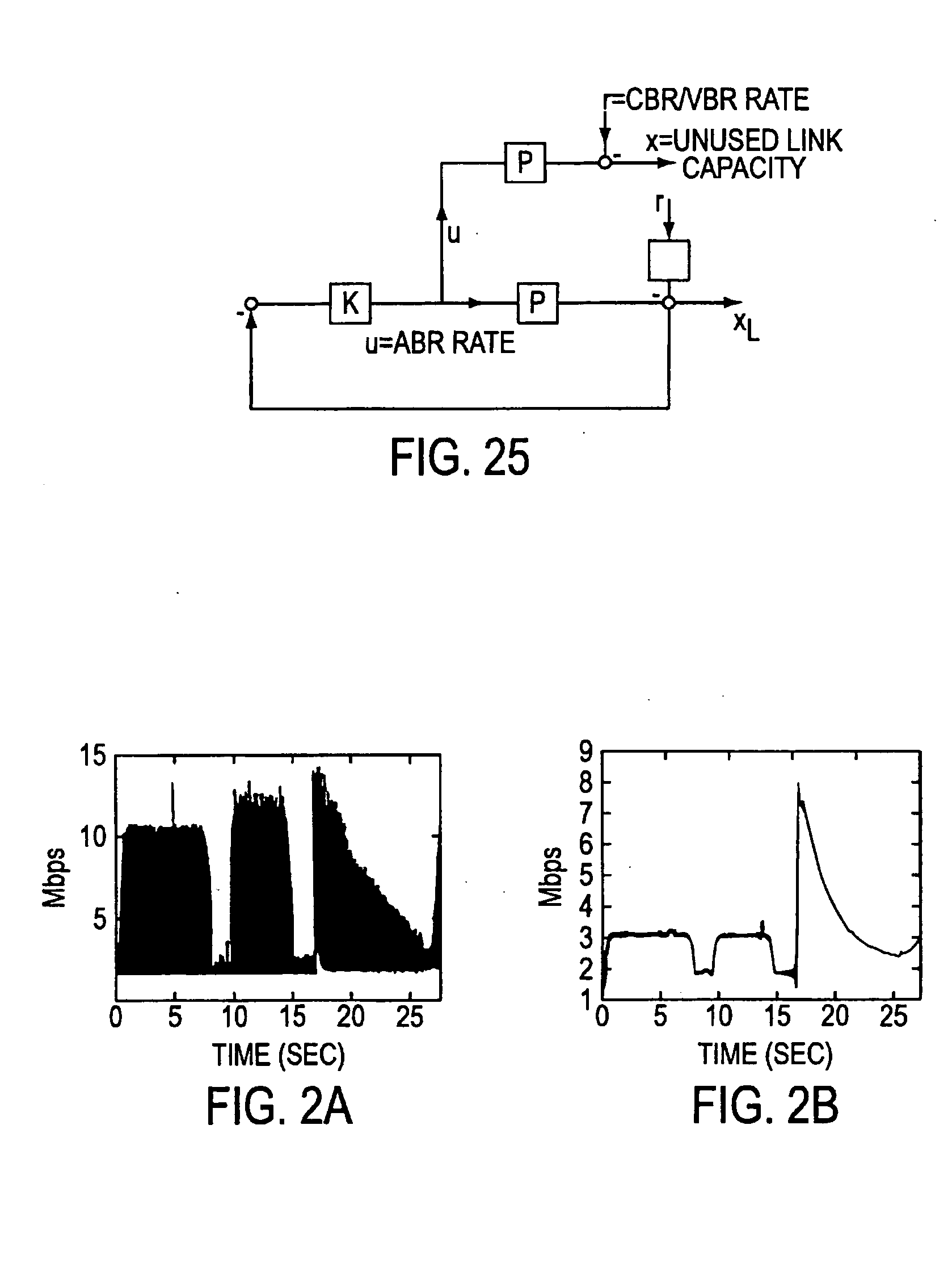EFCI scheme with early congestion detection
a congestion detection and congestion technology, applied in the field of communication, can solve the problem that the link capacity cannot be fully utilized, and achieve the effect of significantly improving the control stability condition, linear quadratic optimal performance, and substantially reducing the buffer capacity requirement for abr traffi
- Summary
- Abstract
- Description
- Claims
- Application Information
AI Technical Summary
Benefits of technology
Problems solved by technology
Method used
Image
Examples
Embodiment Construction
Referring now to the accompanying drawings, FIG. 1 illustrates a block diagram of an asynchronous transfer method (ATM) switch with input buffer switch architecture. Although actual implementation of the explicit forward congestion indicator, early congest detection (EFCI-ECD) scheme of the present invention depends on the type of ATM switch fabric, for purposes of illustration, the features of the invention will be described with reference to an input buffer switch architecture. Of course, the same principles of the invention will apply for an output buffer switch architecture or a shared buffer switch architecture. Further, although the various features of the invention are described herein with reference to ATM switches, the various features and aspects of the invention may also be applied to other types of high speed network switches.
FIG. 1 shows a block diagram of an ATM switch 10 utilizing the EFCI-ECD scheme of the present invention. Incoming ATM cells arrive at each input ...
PUM
 Login to View More
Login to View More Abstract
Description
Claims
Application Information
 Login to View More
Login to View More - R&D
- Intellectual Property
- Life Sciences
- Materials
- Tech Scout
- Unparalleled Data Quality
- Higher Quality Content
- 60% Fewer Hallucinations
Browse by: Latest US Patents, China's latest patents, Technical Efficacy Thesaurus, Application Domain, Technology Topic, Popular Technical Reports.
© 2025 PatSnap. All rights reserved.Legal|Privacy policy|Modern Slavery Act Transparency Statement|Sitemap|About US| Contact US: help@patsnap.com



